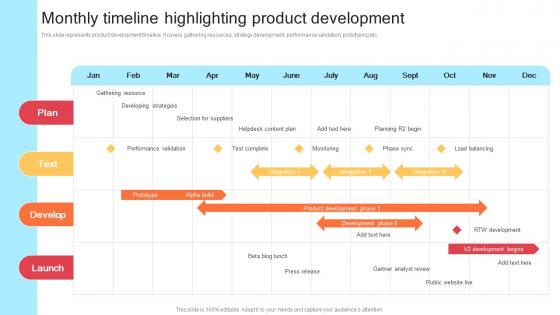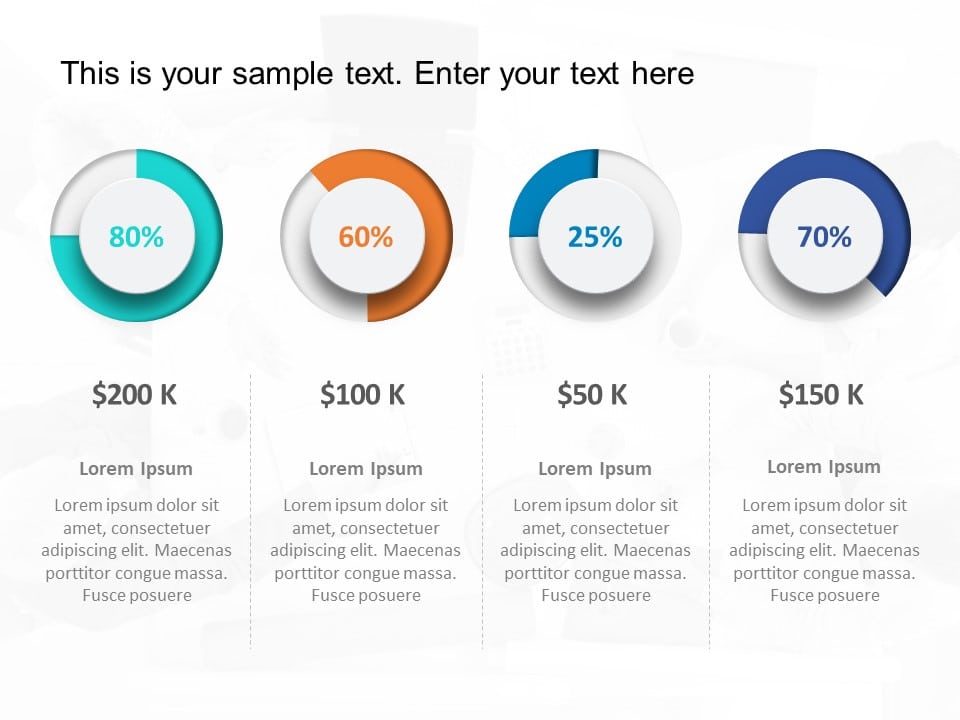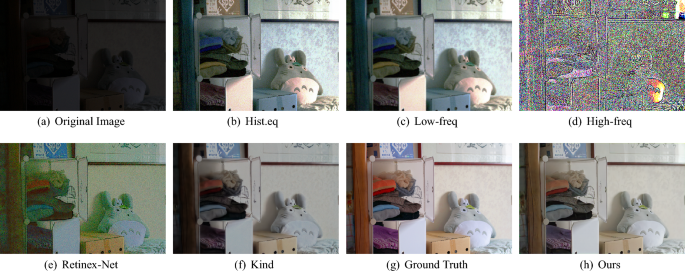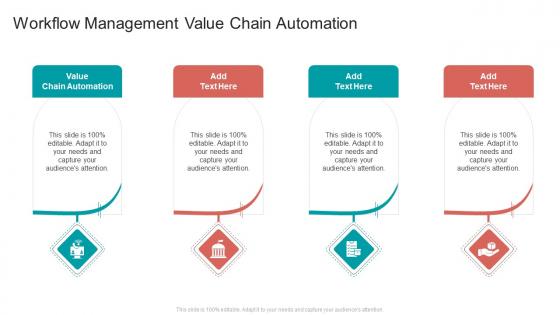Navigating PowerPoint Compatibility: Seamless Solutions for Cross-Version Success
Understanding and overcoming compatibility challenges for flawless presentations
As PowerPoint has evolved through numerous versions, compatibility issues have become a significant challenge for professionals who collaborate across different environments. I've encountered these frustrations firsthand—lost animations, broken graphics, and formatting nightmares that can derail important presentations. In this comprehensive guide, I'll share practical solutions to ensure your presentations maintain their integrity regardless of which PowerPoint version opens them.
Understanding PowerPoint Compatibility Challenges
Over the years, I've watched PowerPoint evolve from a simple slide creator to a sophisticated presentation powerhouse. This evolution, while bringing impressive new features, has created significant compatibility gaps between versions that can compromise presentation integrity.

Common Compatibility Issues
- Animations that disappear or function differently in older versions
- SmartArt graphics converting to static images, losing editability
- Font substitutions causing text overflow and layout disruption
- Custom transitions being simplified or removed entirely
- Embedded media becoming unlinked or unplayable
How Compatibility Mode Works
When you open a presentation created in an older version of PowerPoint, the software automatically enters compatibility mode. I've found this serves as a protective mechanism that:
flowchart TD
A[Open Older .ppt File] -->|Triggers| B[Compatibility Mode Activated]
B --> C{Feature Limitations}
C --> D[Prevents Using New Features]
C --> E[Maintains File Format]
C --> F[Ensures Backward Compatibility]
D & E & F --> G[Save Options]
G --> H[Keep in Compatibility Mode]
G --> I[Convert to Current Version]
Compatibility mode restricts access to newer features that wouldn't work in older versions, helping maintain presentation integrity when saved back to the original format. However, this protection comes at the cost of functionality.
Business Impact of Compatibility Issues
In my experience working with teams across different PowerPoint environments, compatibility issues can lead to serious business consequences:
- Missed deadlines: When presentations require extensive reformatting
- Presentation failures: When critical animations or media don't function during client meetings
- Communication breakdowns: When visual elements don't convey intended messages due to conversion issues
- Brand inconsistency: When fonts and colors don't render as designed across different versions
Understanding these challenges is the first step toward implementing effective solutions. In the next sections, I'll show you how to identify and resolve these issues before they impact your presentations.
Identifying Compatibility Issues Before They Happen
Proactive identification of compatibility issues has saved me countless hours of emergency fixes. Here's how I spot potential problems before they derail my presentations.
Visual Indicators of Compatibility Mode
When working in PowerPoint, I always look for these telltale signs that my presentation is in compatibility mode:
Title Bar Indicators
"[Compatibility Mode]" appears in the title bar next to the filename
File Tab Information
The Info section under File tab displays "Compatibility Mode" status
Ribbon Limitations
Certain ribbon features appear grayed out or inaccessible
File Extension
The file has a .ppt extension rather than .pptx

Using the Compatibility Checker Tool
Microsoft's built-in Compatibility Checker has been my go-to tool for identifying potential issues. Here's how I use it effectively:
- Click the File tab, then select Info
- Under Inspect Presentation, click Check for Issues
- Select Check Compatibility from the dropdown menu
- Review the detailed report of potential compatibility issues
- Consider enabling the option to check compatibility automatically when saving
Common Red Flags for Version Conflicts
Compatibility Risk by Feature Type
Based on my experience, here are the features most likely to cause compatibility issues:
Preventative Workflow Strategies
Over the years, I've developed these workflow practices to minimize compatibility headaches:
- Start by identifying the oldest PowerPoint version that might open your presentation
- Create a master template tested across all target versions
- Maintain a library of "safe" animations and transitions that work universally
- Use standard fonts that exist across all PowerPoint versions
- Test presentations on different versions before important meetings
When collaborating with teams using different PowerPoint versions, I've found that PowerPoint alternatives can sometimes provide more consistent results. However, for those committed to PowerPoint, version-agnostic visual elements are crucial.
Creating Version-Agnostic Visual Elements
PageOn.ai's AI Blocks feature has transformed how I approach cross-version compatibility. By creating modular visual components that maintain their integrity across versions, I can focus on content rather than troubleshooting. These blocks serve as universal visual building blocks that render consistently regardless of PowerPoint version.
Essential Solutions for PowerPoint Version Conflicts
When compatibility issues arise, I rely on these proven solutions to ensure my presentations work flawlessly across different PowerPoint versions.
Step-by-Step Guide to Running the Compatibility Checker
The Compatibility Checker workflow I follow for every important presentation:
flowchart TD
A[Open Presentation] --> B[Click File Tab]
B --> C[Select Info]
C --> D[Click Check for Issues]
D --> E[Select Check Compatibility]
E --> F[Review Compatibility Report]
F --> G{Issues Found?}
G -->|Yes| H[Address Issues Individually]
G -->|No| I[Presentation Ready]
H --> J[Re-Run Checker]
J --> G
Setting Up Automatic Compatibility Checks
To prevent compatibility issues from slipping through, I always enable automatic checking with these steps:
- Open the Compatibility Checker as described above
- At the bottom of the dialog box, check the option "Check compatibility when saving in PowerPoint 97-2003 formats"
- Click "Check" to complete the process
- PowerPoint will now automatically check compatibility whenever you save to older formats

Converting Presentations Between Different PowerPoint Versions
When I need to convert presentations while preserving as much formatting as possible, I follow this process:
flowchart TD
A[Open Presentation in Latest PowerPoint] --> B{In Compatibility Mode?}
B -->|Yes| C[Click File > Info]
B -->|No| D[Save in Desired Format]
C --> E[Click Convert Button]
E --> F[Review Converted Presentation]
F --> G[Run Compatibility Checker]
G --> H[Make Necessary Adjustments]
H --> D
D --> I[Test on Target Version]
Best Practices for Universally Compatible Formats
PowerPoint Show (.ppsx)
When I need a presentation to open directly in slideshow mode with minimal compatibility issues, .ppsx is my go-to format. It works well for final distribution when no further editing is needed.
PDF Format
For absolute consistency in visual appearance across all devices and platforms, I convert critical presentations to PDF. While this sacrifices animations and interactivity, it guarantees visual fidelity.
PowerPoint 97-2003 (.ppt)
When backward compatibility is the primary concern, saving in the classic .ppt format ensures the widest compatibility, though at the cost of newer features.
PowerPoint Template (.potx)
For standardizing presentations across a team with mixed PowerPoint versions, I create templates that have been tested across all target versions.
When dealing with complex presentations that include PDFs as reference materials, I've found that learning how to properly insert PDFs in PowerPoint can help maintain compatibility while providing access to important supporting documents.
Leveraging PageOn.ai for Compatible Visual Assets
When compatibility issues force me to abandon certain visual elements, PageOn.ai's Deep Search functionality has been invaluable. It helps me quickly find alternative visual assets that convey the same message but work across all PowerPoint versions. This has saved countless hours of redesign work when preparing presentations for environments with mixed PowerPoint versions.
Advanced Compatibility Strategies for Complex Presentations
For presentations with sophisticated elements, I've developed these advanced techniques to maintain compatibility without sacrificing impact.
Preserving Animations Across PowerPoint Versions

To maintain animation integrity across versions, I follow these principles:
- Stick to basic animation types: Entrance, emphasis, and exit animations have the best cross-version compatibility
- Avoid trigger animations: These often break in older versions
- Use motion paths sparingly: When necessary, test thoroughly on target versions
- Break complex animations into simpler sequences: This reduces the chance of complete animation failure
- Create "animation safe" versions: For critical presentations, maintain a version with simplified animations
Solutions for SmartArt and Advanced Graphics
SmartArt Compatibility Success Rates
Based on my testing, here's how different SmartArt types perform across versions:
When working with SmartArt and complex graphics across versions, I use these techniques:
SmartArt Preservation Techniques
- Create a backup copy of complex SmartArt as a grouped shape
- For older versions, consider manually recreating SmartArt using basic shapes
- Use "Ungroup" to convert SmartArt to editable shapes when sending to older versions
- Maintain a "graphics bank" of version-tested SmartArt alternatives
- For critical presentations, include both SmartArt and image versions on separate slides
Font Substitution Strategies
Font issues have ruined many presentations. Here's my system for maintaining visual consistency:
Use Safe Fonts
Stick to fonts installed across all Windows/Mac versions: Arial, Verdana, Times New Roman, Tahoma, and Calibri
Embed Fonts
Enable font embedding in File > Options > Save > "Embed fonts in the file"
Font Fallbacks
Designate fallback fonts for custom typography and test how they display
Convert to Shapes
For critical text elements, convert text to shapes to preserve exact appearance
Managing Embedded Media Compatibility
Embedded videos and audio are particularly prone to compatibility issues. My approach includes:
flowchart TD
A[Identify Media Elements] --> B{Critical to Presentation?}
B -->|Yes| C[Check Format Compatibility]
B -->|No| D[Consider Removing]
C -->|Compatible| E[Embed Media]
C -->|Not Compatible| F[Convert to Compatible Format]
F --> E
E --> G[Package for CD Option]
G --> H[Test on Target Systems]
D --> I[Replace with Static Image]
I --> J[Provide Media Links]
For presentations with embedded media that must work across versions, I recommend:
- Using MP4 format with H.264 encoding for maximum compatibility
- Keeping video files under 50MB to avoid playback issues
- Using the "Package for CD" feature to ensure media files stay with the presentation
- Including a static thumbnail image as fallback for each video
- Testing video playback on each target PowerPoint version before presenting
Leveraging PageOn.ai for Complex Presentation Concepts
When dealing with particularly complex presentation concepts that struggle with cross-version compatibility, I've found PageOn.ai's Vibe Creation feature to be transformative. It helps translate sophisticated ideas into universally compatible visual formats that maintain their impact regardless of the PowerPoint version. This has been especially valuable for technical presentations that would otherwise require extensive custom graphics work.
Cross-Platform Presentation Solutions Beyond Traditional PowerPoint
In today's diverse technology landscape, presentations often need to work across multiple platforms. I've developed strategies that extend beyond traditional PowerPoint to ensure seamless experiences.
PowerPoint Online vs. Desktop Versions
Feature Support Comparison
Understanding the differences between online and desktop versions has been crucial for my cross-platform strategy:
When working with Microsoft PowerPoint Online, I keep these compatibility considerations in mind:
- Limited animation support: Simplify animations for presentations that will be edited online
- Font differences: Stick to web-safe fonts when collaboration includes PowerPoint Online
- Reduced editing capabilities: Complex SmartArt and charts may have limited editability
- Performance considerations: Large presentations may load slowly in browser-based environments
- Collaboration benefits: Despite limitations, real-time collaboration can outweigh feature restrictions
Integration with Google Slides/Docs
For teams using mixed Microsoft and Google environments, I've found these approaches effective:

Creating a powerpoint presentation with Google Docs requires careful planning to ensure compatibility. My process typically includes:
- Starting with a minimalist design approach that works in both ecosystems
- Using Google Slides for collaborative development, then exporting to PowerPoint for final polish
- Maintaining separate "master" versions in native formats for each platform
- Using cloud storage solutions that integrate with both ecosystems
- Establishing clear hand-off protocols for when presentations move between platforms
Effective Use of PowerPoint Add-ins
Strategic use of powerpoint add-ins has helped me overcome many compatibility challenges:
Format Converter Add-ins
Specialized tools that help preserve formatting when converting between versions
Compatibility Checkers
Advanced versions of the built-in checker with more detailed reports
Cloud Integration Add-ins
Tools that improve sharing between desktop and online versions
PDF Integration Techniques
PDF has become my go-to format for ensuring visual consistency across platforms:
- Embedding PDFs as objects: Allows referencing detailed documents while maintaining presentation flow
- Converting presentations to PDF: Creates a universally viewable version for distribution
- PDF handouts: Provides consistent materials regardless of the presentation platform
- Hybrid approaches: Using PowerPoint for presenting, PDF for distribution
Creating Future-Proof Presentations with PageOn.ai
The software landscape continues to evolve rapidly, creating ongoing compatibility challenges. PageOn.ai's agentic capabilities have become an essential part of my workflow, helping create presentations that adapt to changing software environments. By focusing on the underlying visual communication principles rather than specific software features, I can develop content that remains effective regardless of the platform used to display it.
Building a Compatibility-First Presentation Workflow
After years of navigating PowerPoint compatibility challenges, I've developed a systematic workflow that prioritizes compatibility from the start of every project.
Creating Compatible Presentation Templates

My approach to template design for maximum cross-version compatibility includes:
- Creating master slides with "safe zones" for content that work across all versions
- Developing a consistent color palette that renders accurately on all platforms
- Establishing font hierarchies with primary and fallback options
- Including pre-tested animation sequences that work universally
- Providing alternate layouts for complex content arrangements
- Testing templates across all target PowerPoint versions before deployment
Team Collaboration Protocols
flowchart TD
A[Define Team PowerPoint Versions] --> B[Establish Lowest Common Denominator]
B --> C[Create Version-Specific Guidelines]
C --> D[Implement Version Control System]
D --> E[Establish Review Checkpoints]
E --> F[Document Known Issues/Workarounds]
F --> G[Create Shared Asset Library]
G --> H[Regular Compatibility Training]
When working with teams using mixed PowerPoint environments, I implement these protocols:
- Designate a "compatibility coordinator" responsible for final version checking
- Establish clear file naming conventions that indicate compatibility status
- Create a shared repository of version-tested assets and elements
- Implement version control practices for tracking presentation evolution
- Develop a communication system for flagging and resolving compatibility issues
Quality Assurance Processes
Before any client-facing presentation, my QA process includes:
Pre-Presentation Compatibility Checklist
- Verify presentation on the specific device and software version that will be used
- Run a full slideshow rehearsal with all animations and transitions
- Check all embedded media playback in presentation mode
- Verify all links and interactive elements function as expected
- Prepare a backup PDF version for emergency situations
- Have alternative presentation devices available when possible
Training Strategies for Mixed PowerPoint Teams
Based on my experience training teams on compatibility issues, I recommend:
Focused Micro-Training
Short, specific training sessions on individual compatibility issues rather than overwhelming comprehensive training
Real-World Scenarios
Practice with actual compatibility problems the team has encountered rather than theoretical examples
Version-Specific Guides
Create customized reference materials for each PowerPoint version used within the organization
Peer Learning System
Establish a mentoring system where experienced users help others navigate version-specific challenges
Transforming Concepts with PageOn.ai
Perhaps the most significant improvement to my compatibility workflow has been incorporating PageOn.ai into our ideation process. By using PageOn.ai to transform initial presentation concepts into clear visual expressions, we establish a solid foundation that works across all platforms. This approach shifts our focus from troubleshooting compatibility issues to creating truly effective visual communication. The platform's ability to distill complex ideas into universally understandable visuals has been particularly valuable when creating presentations that must work across diverse technical environments.
By implementing these compatibility-first workflows, I've dramatically reduced the time spent troubleshooting version conflicts and increased the reliability of presentations across all PowerPoint environments. The key has been shifting from a reactive approach (fixing problems as they arise) to a proactive strategy that anticipates and prevents compatibility issues from the start.
Transform Your Visual Expressions with PageOn.ai
Stop struggling with PowerPoint compatibility issues. PageOn.ai helps you create stunning, universally compatible presentations that maintain their visual integrity across all platforms and versions. Our AI-powered tools automatically adapt your visual expressions to work flawlessly in any environment.
Final Thoughts: Beyond Compatibility
Throughout my years working with PowerPoint across various versions and environments, I've learned that compatibility issues are more than technical challenges—they're communication barriers that can undermine even the most compelling content.
The strategies and solutions I've shared here have helped me transform frustrating compatibility problems into manageable workflows. By adopting a compatibility-first mindset, you can focus on what truly matters: creating presentations that effectively communicate your ideas.
As presentation technologies continue to evolve, the fundamental principles of visual communication remain constant. Tools like PageOn.ai are leading the way in this evolution, helping transform complex ideas into clear visual expressions that work across all platforms. By combining these innovative tools with the practical compatibility strategies outlined in this guide, you can create presentations that are both visually stunning and technically robust.
Remember that the ultimate goal isn't perfect compatibility—it's effective communication. When your audience is engaged with your message rather than distracted by technical glitches, you've achieved presentation success.
You Might Also Like
Pop Mart's Global Expansion Strategy: From Chinese Toy Brand to Worldwide Phenomenon
Explore Pop Mart's strategic international expansion from China to global markets through Southeast Asia, North America, and Europe with data-driven insights on their multi-channel approach.
Visualizing Your Career Evolution: Mapping the 20-30 Job Future | PageOn.ai
Discover how to navigate the evolving 20-30 job future with AI-powered visualization tools. Learn to map transferable skills, plan strategic pivots, and build a resilient career path.
Labubu's Global Journey: From Chinese Designer Toy to Worldwide Visual Phenomenon
Explore how Labubu, the quirky Chinese designer toy, captivated global markets through strategic visual storytelling and created an international cultural phenomenon.
Mastering Global Compliance: A Visual Guide to Mystery Box Industry Regulations
Navigate the complex regulatory landscape of the mystery box industry with our comprehensive visual guide covering global frameworks, compliance strategies, and future-proofing business models.
